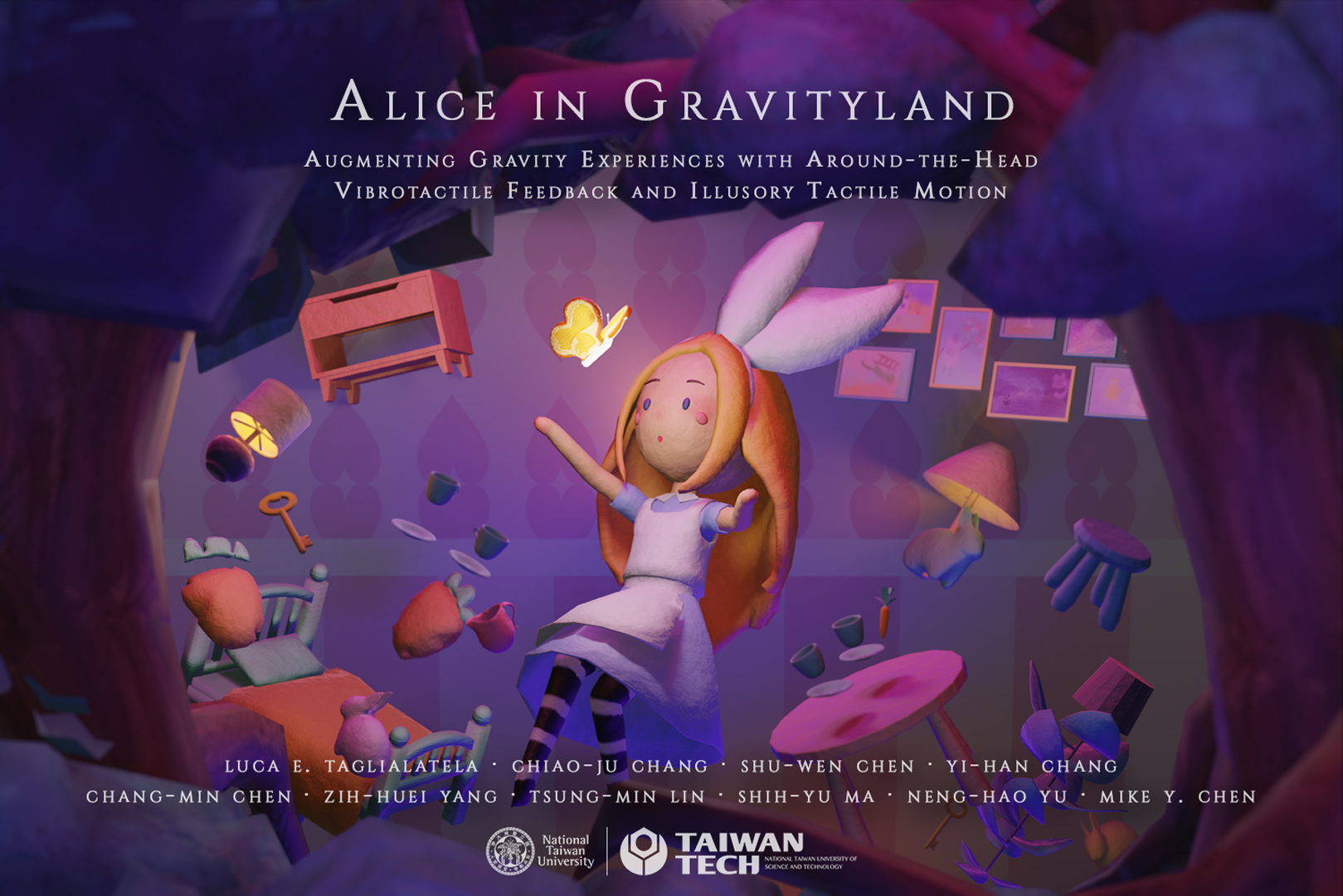“Alice in Gravityland: Augmenting Gravity Experiences with Around-the-Head Vibrotactile Feedback and Illusory Tactile Motion” by Taglialatela, Chang, Chen, Chang, Chen, et al. …
Conference:
Experience Type(s):
Entry Number: 02
Title:
- Alice in Gravityland: Augmenting Gravity Experiences with Around-the-Head Vibrotactile Feedback and Illusory Tactile Motion
Presenter(s):
Description:
Alice in Gravityland is a VR adventure exploring three gravity experiences with novel, around-the-head vibrotactile feedback using illusory tactile motion. Players are able to 1) change the direction of gravity, 2) navigate through zero gravity, and 3) defy gravity as they walk on walls. The haptic feedback helps improve players’ sense of directionality to improve immersion when experiencing gravity events. Inspired by Lewis Carroll’s Alice’s Adventures in Wonderland (1865), the game invites players to alter gravity to solve puzzles and experience gravity in a unique way through this multi-sensory VR adventure.
References:
- Shao-Yu Chu, Yun-Ting Cheng, Shih Chin Lin, Yung-Wen Huang, Yi Chen, and Mike Y. Chen. 2021. MotionRing: Creating Illusory Tactile Motion around the Head Using 360° Vibrotactile Headbands. In The 34th Annual ACM Symposium on User Interface Software and Technology (Virtual Event, USA) (UIST ’21). Association for Computing Machinery, New York, NY, USA, 724–731. https://doi.org/10.1145/3472749.3474781
- Yi-Hao Peng, Carolyn Yu, Shi-Hong Liu, Chung-Wei Wang, Paul Taele, Neng-Hao Yu, and Mike Y. Chen. 2020. WalkingVibe: Reducing Virtual Reality Sickness and Improving Realism While Walking in VR Using Unobtrusive Head-Mounted Vibrotactile Feedback. In Proceedings of the 2020 CHI Conference on Human Factors in Computing Systems (Honolulu, HI, USA) (CHI ’20). Association for Computing Machinery, New York, NY, USA, 1–12. https://doi.org/10.1145/3313831.3376847
- Carl E. Sherrick and Ronald Rogers. 1966. Apparent haptic movement. Perception & Psychophysics 1 (1966), 175–180. https://doi.org/10.3758/BF03215780





